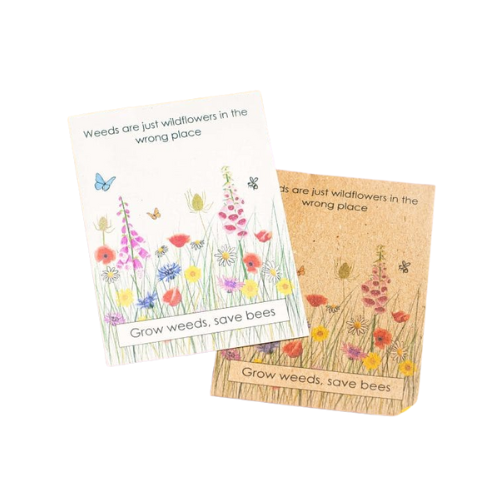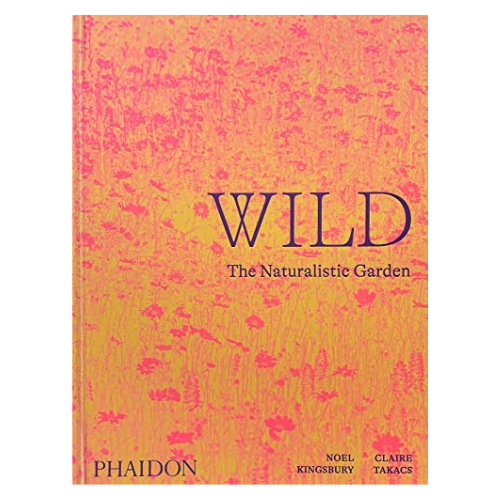"Messy Gardening" Is the Emerging Trend That Embraces the Chaos — Here's How to Design an Outdoor Space With It Intentionally
Say goodbye to your preened-to-perfection garden. For increased biodiversity and more organic feel to your yard, the messier the better


Is your idea of a beautiful garden one of manicured perfection? A picture-perfect backyard with rows of neatly pruned hedges and sharp borders of brightly colored flowers? Or, have you, like us, learnt to appreciate the beauty in chaos?
If you haven't yet, now is your time. Because, as it happens, stepping over to the wild side doesn't just look good, but it can also help to transform our ecosystem, creating a space rich in biodiversity, working against the disastrous effects of climate change. In short, this is wildlife gardening for a better future.
"There’s a growing awareness that gardening isn’t just about pretty borders — it’s about supporting the planet," explains Rhiannon Odey, from Easy Garden Irrigation. "More people are seeing their gardens as part of a wider ecological network."
The 'messy' garden trend is the result of a gardening approach known as 'rewilding', which has become increasingly popular over recent years. Plus, the hands-off approach means it's perfect for those who aren't naturally green-fingered.
What Is Rewilding?

"Rewilding is a conservation approach that focuses on restoring degraded landscapes to their more natural state," explains Joseph Richardson, from Richardson & Associates Landscape Architecture.
This progressive restoration approach is all about us taking a step back and letting nature do what it does best, without our constant interruption. Although there are some things we can do to help this process along.
"This can be achieved by removing invasive species of plantings that disrupt the natural balance of the ecosystem," Joseph adds. Beyond the removal of these species that may prevent optimal growth, this approach largely revolves around minimal human intervention.
The Livingetc newsletters are your inside source for what’s shaping interiors now - and what’s next. Discover trend forecasts, smart style ideas, and curated shopping inspiration that brings design to life. Subscribe today and stay ahead of the curve.
"Rewilding in a garden context means allowing nature to take the lead. It’s about stepping back from overly manicured spaces and letting natural processes shape the garden," explains Rhiannon.
"This could include leaving areas of long grass, letting native wildflowers self-seed, or allowing hedges and brambles to grow more freely. The goal is to create a space that supports local wildlife, mimics natural ecosystems, and reduces human intervention," she says.
Of course, this process will look different depending on the surroundings in which you're implementing it.
Garden architect Pieter Croes explains, "Rewilding in the city is a process of restoring natural habitats and ecosystems within cities, aiming to integrate nature into urban environments."
Allowing for rewilding within major cities can help improve the quality of life for both the wildlife living in these spaces and the inhabitants of the city. You can do your bit as part of your urban garden ideas, too.
As James S. Mastaler, founder of Pistils and Pollen, says, "It’s less about 'letting it go wild' and more about designing with ecology in mind."
Belgian based garden architects Bart Haverkamp and Pieter Croes turned their love for nature into a beautiful profession. They consider it their mission to offer a counterbalance to the raging and rapid pace of the city. In whatever challenge they undertake, raising nature values and bringing more biodiversity into our environment is a constant factor. Together, they have recently written a book on the topic of rewilding called Wild Harmony.
Why Is Biodiversity So Important?
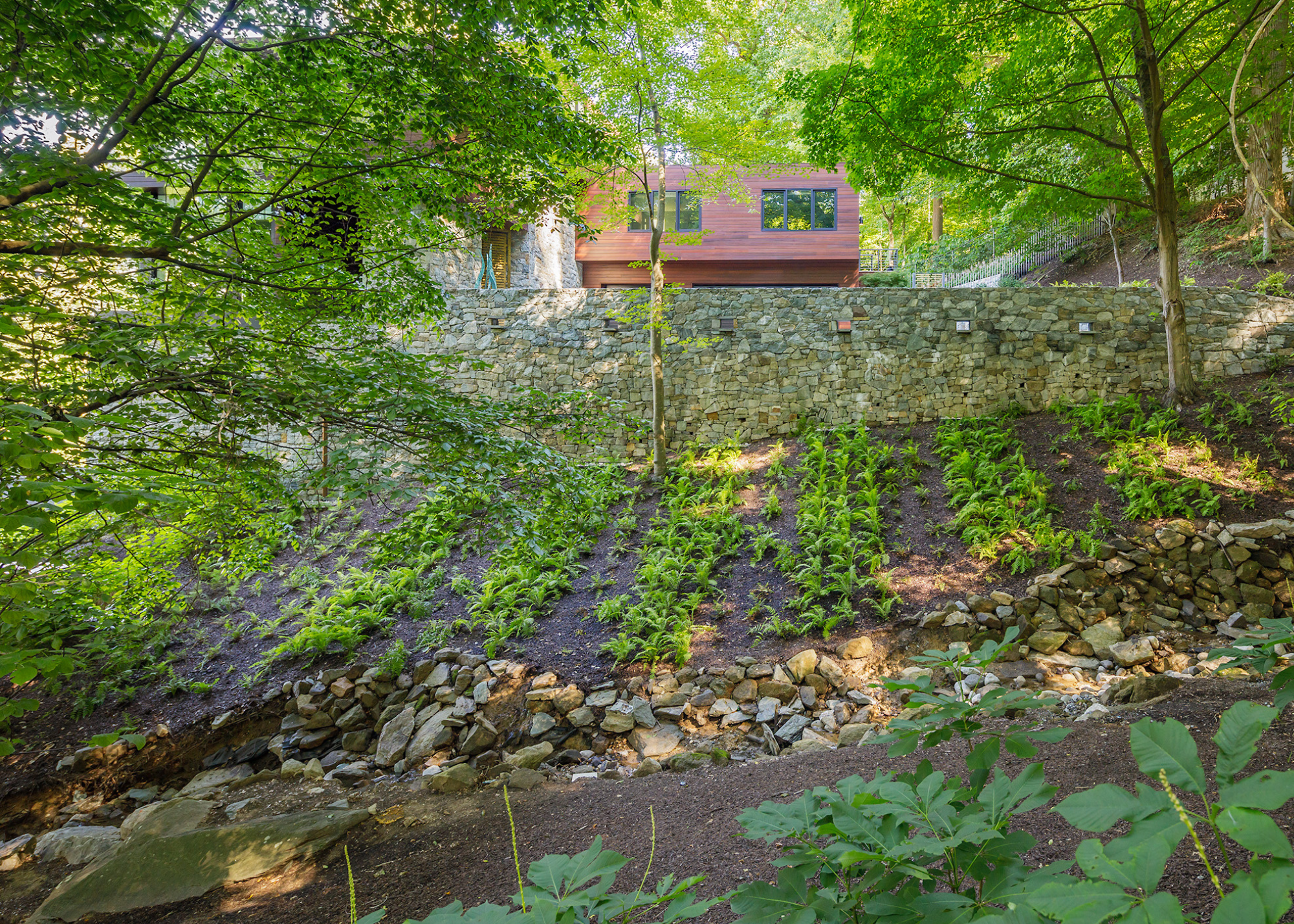
The main motivation behind rewilding as a process is the positive effects it can have for promoting biodiversity, but what does this actually mean?
"Biodiversity is critical for supporting food production, disease resistance, climate change migration, economic development, and the overall health and well-being of all walks of life," says Joseph.
Also known as biological diversity, it refers to the breadth of variety of living creatures on earth, from invisible microbes to mammoth sea creatures.
"Biodiversity is the foundation of a healthy ecosystem. A garden rich in biodiversity supports pollinators like bees and butterflies, natural pest controllers like ladybirds and hedgehogs, and contributes to overall soil and plant health," Rhiannon explains, "With climate change and habitat loss threatening many species, even small efforts in our own back gardens can create vital sanctuaries for wildlife."
As Rhiannon notes, making the effort to help foster a more biodiverse garden has become increasingly important as the effects of climate change begin to rise. Making small changes in your backyard is the beginning step to tackling the climate crisis, in a way that can feel manageable, as opposed to overwhelming.
"Biodiversity is the basis of all things — we as humans are a part of nature and depend on the interdependence of all things — as Bill Bryson says: 'It cannot be said too often: all life is one.' That is, and I suspect will forever prove to be, the most profound true statement there is," says Pieter.
The ecosystem you build in your garden is not limited to the dimensions of your home, it is part of a larger ecological system, connected to the health of our entire planet.
"The thing we’re trying to do in the limited spaces in cities where we work is to always choose for maximum nature, plants, and less so in technical solutions or other things that are not essential," says Pieter, "The atmosphere of it is for the most part defined by the planting and of course, if possible, the abundance of plants — the plants must do the work."
Incorporating some of the best plants for wildlife is one step you can take towards this goal.
Joseph Richardson is the founder of Richardson & Associates Landscape Architecture, a boutique firm based in Washington, D.C. Passionate about design, planning, construction, and management Joe’s sensibility and ease attracts both dedicated clientele and a talented, experienced team.
How Do Messy Gardens Help With Biodiversity?

"‘Messy’ gardens create the perfect conditions for life to flourish," explains Rhiannon.
These slightly wild, fairy-tale gardens not only look beautiful, but they can also help create a biodiverse environment for wildlife to thrive within.
"Long grass provides shelter for insects and amphibians. Leaf piles and logs offer homes for hedgehogs and beetles. A mix of native wildflowers feeds bees, butterflies, and other pollinators," Rhiannon continues. "Unlike tidy gardens, which often prioritise aesthetics over function, messy gardens can provide food, shelter, and breeding grounds for wildlife."
Plus, this low-maintenance garden design removes the pressure of constantly preening and pruning your backyard, and instead encourages you to let nature take control.
"'Messy' gardens often leave room for life — Rather than constantly “tidying up,” these gardens prioritize function: shelter, food, and space for a broad range of species. In our pollinator beds, simply leaving more seedheads standing into winter has resulted in a noticeable uptick in bird and insect activity," says James.
How to Create a Messy Garden
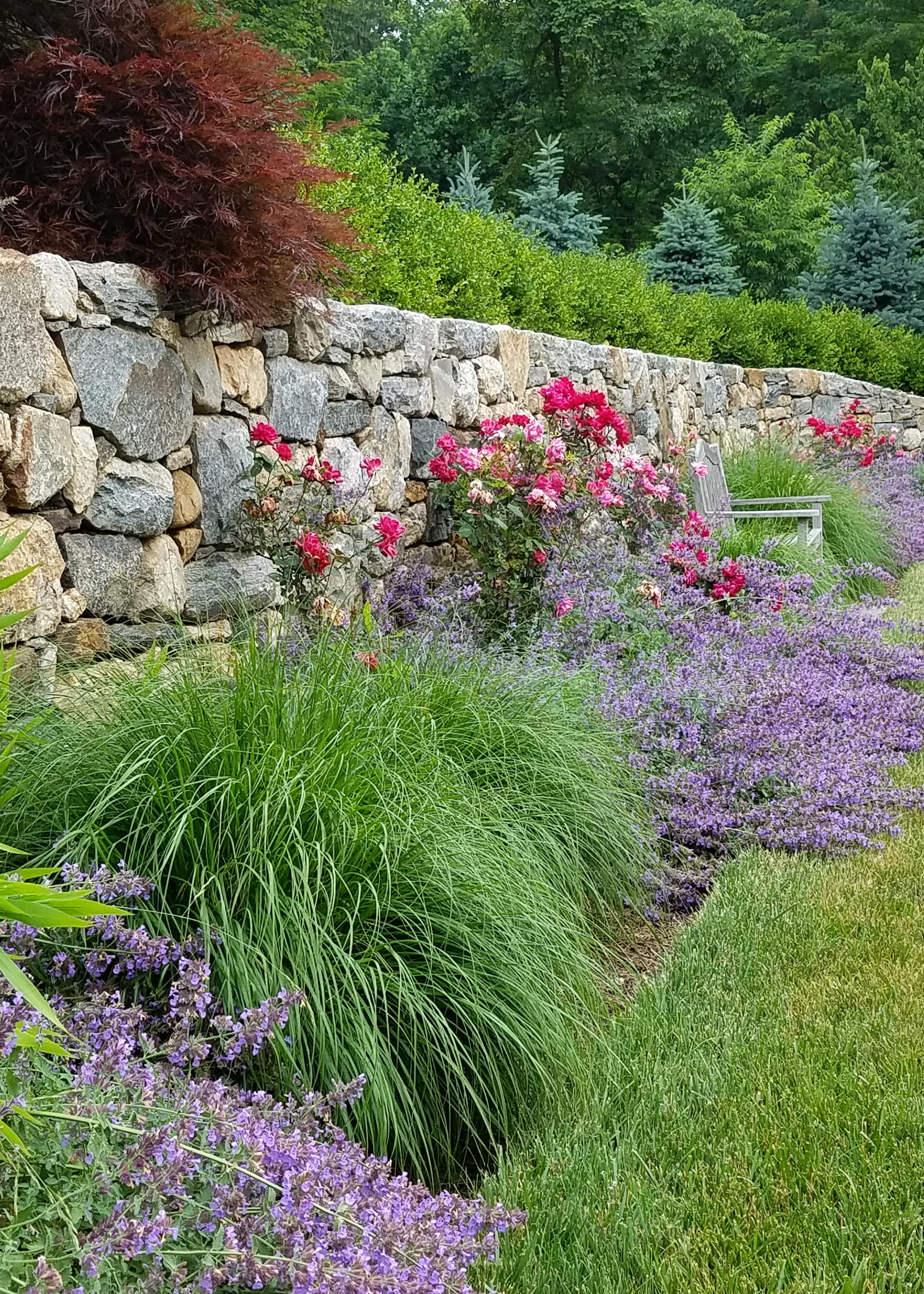
Now we've fully established all the wonderful benefits of a 'messy' garden, you may be wondering how to get started.
Well, like all good things, this will take time. The first step to building a healthy, diverse garden is to look around and take note of the natural inclinations of your environment.
"Start by observing. Notice what grows in your area, which insects visit your garden, and what’s already thriving with little intervention," says James.
Or, as Pieter puts it, "A good way to start is to think about what would be in the garden if you left it alone for 30 years. What would be there? This is what would happen if you totally let go."
From this point, you can begin to adjust and add to your garden to help aid the natural environment, and even grow a more climate-resistant garden.
"Start small and let nature guide you. Leave a patch of lawn uncut, avoid using pesticides, and create habitats like log piles, leaf mounds, or a mini wildlife pond," says Rhiannon.
This is also the stage at which you can begin to introduce other species of plants into your design.
"Then add a few native plants — those adapted to your local soils and weather patterns," says James.
However, the most important part of this process is in rescinding your control. Say goodbye to your inclination to cut, chop, and remove, and instead, embrace the natural movements of the world.
"Reduce chemical inputs, cut back less aggressively, and try layering your plantings by height and season," suggests James, "It's not about chaos; it's about planting with purpose and letting the landscape breathe."
However, you don't have to completely remove yourself from the process.
As Pieter explains, "If you want to ‘control’ the messy garden, you do it by giving very little, but very constant attention. Walk through it every few days and do little things, cut a branch that is pushing away another plant, take some seeds of one plant and put them in another part of the garden. By doing so, you learn and observe, and that is necessary — learning basic things about nature, and plants is essential to be able to let go. The messy garden will still need attention."
It's this relaxed, but still attentive approach, that will allow you to create a truly diverse, successful 'messy' garden.
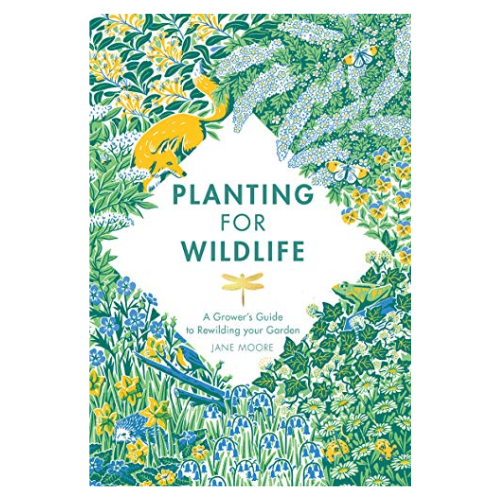
This book offers a complete guide to rewilding your outdoor space to benefit local wildlife. Whether you live in the countryside, or in the middle of the city, Jane Moore has plenty of tips for gardens of all shapes and sizes.
This doesn't have to be the beginning and end of your journey to a more sustainable, climate-friendly home. Bring the same approach to your home with sustainable interior design. Or, if you're in need of some more inspiration, these beautiful, sustainable homes have plenty for you to lust after.

Maya Glantz is a Design Writer at Livingetc, covering all things bathrooms and kitchens. Her background in Art History informed her love of the aesthetic world, and she believes in the importance of finding beauty in the everyday. She recently graduated from City University with a Masters Degree in Magazine Journalism, during which she gained experience writing for various publications, including the Evening Standard. A lover of mid-century style, she can be found endlessly adding to her dream home Pinterest board.
